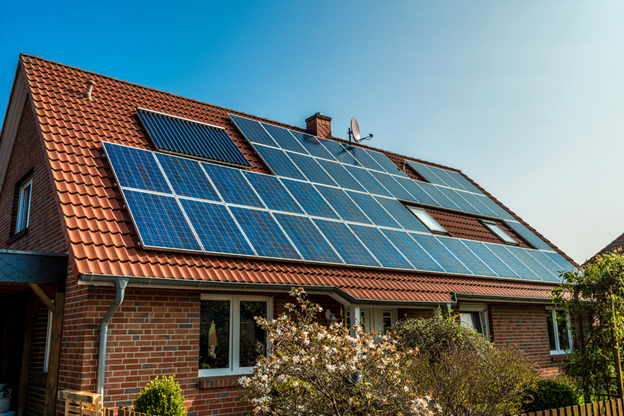INTERIOR DESIGN & ARCHITECTURE
Energy costs are higher than they’ve ever been and are projected to keep climbing. The consequences of burning fossil fuels are constant reminders to homeowners across the world that our wellbeing is dependent on the ways we treat the Earth. Preserving the planet is an astronomically large task, but starting at home is the easiest way to enact big change. Making your home more energy efficient can save you thousands of dollars and save the planet!

Small-scale changes
Turn down the thermostat
The moment the temperature drops off, we are quick to run to our thermostats and blast the heat all the way up. Since we want to keep our homes warm and toasty at all times, we tend to leave the heat on all day and all night, regardless of if anyone is home or not. In a study conducted by the U.S. Department of Energy, it was found that lowering your thermostat by 10 to 15 degrees during the work day reduced wasted energy and resulted in 5 percent to 15 percent in annual savings. Investing in a smart thermometer will allow you to control the temperature settings in your home from your smartphone!
Seal the windows
No one likes a drafty window, and no one likes wasting money on pricy heating bills. Make sure you’re getting the most of your money by sealing any leaky windows. Depending on your window type, you may need to get creative with your sealing method. Weatherstripping around the frames has become a popular method to combat drafty openings. This DIY project takes no time to complete with no prior experience necessary! More experienced handymen and women can also venture into caulking drafty cracks.
Monitor water usage
Take a moment to really think about your regular water usage. Do you leave the faucet running while brushing your teeth? Run laundry loads that are only half-full? Insignificant as it may seem, your water usage can take a serious toll on your energy bill. According to the U.S. Environmental Protection Agency, homeowners can save an average of 170 dollars per year if they become more conservative with their water usage.
Unplug unused devices
Smartphone and battery chargers are typically left plugged into outlets for convenience, but it is often overlooked just how much energy these unused chargers passively use. The U.S. Department of Energy found that these energy vampires are collectively responsible for up to 10 percent of your energy bill. Getting into the habit of unplugging chargers when your devices have reached 100 percent can save you hundreds and increase the long-term life of your batteries!
Large-scale changes
Install solar panels
Compact living and solar energy are the way of the energy-efficient future. Though they carry hefty costs, solar panels work to save big on future energy bills. By converting energy from the sun into electricity, solar panels can be used to power home and hot water heat. These innovative panels lower fossil fuel usage and function independently of your utility company. While the upfront cost may be discouraging, the long-term savings make solar energy a worthwhile investment. Be sure to shop around several cities as service costs will vary. Roofing contractors in Los Angeles may offer more affordable prices than Anaheim contractors – don’t be afraid to compare prices and see if you can get yourself a better deal.
Fire up the fireplace

Reduce your home heating costs by firing up the dusty old fireplace. Wood burning is the ultimate money-saving method to heating your home. Green homeowners across the country choose wood as their primary fuel. Give your chimney a good sweep before sparking a fire to ensure certain safety. Make sure you’re burning the proper type of wood for optimal home heating and the appropriate tools to start and contain a fire in your house.
Wash with cold water
Out of habit, we tend to use hot water for just about everything. In the shower, during laundry cycles, and throughout dishwashing rotations. With the exception of showering, cold water is perfectly suitable for all washing duties. Using cold water can actually greatly benefit your laundry cycles. All colors can be thrown into the same batch without any color bleeding. You can even be greener by modifying the settings to a lower heat output during your clothes drying cycles.
| < Prev | Next > |
|---|

